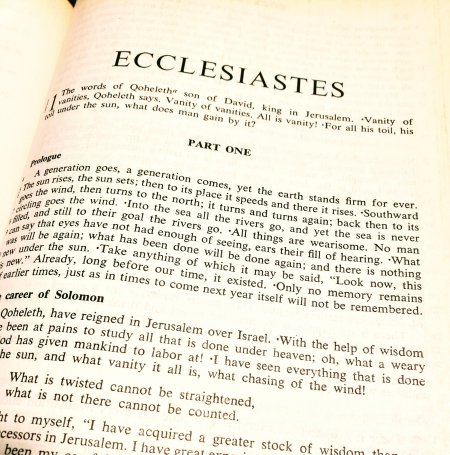
Layers of Ideas Covering my Desktop
I admit that I often set up compositions to photograph for the blog, hoping they will catch attention. But I testify that the photo above is very real, and I wasn’t aware of what my desktop had become till I re-entered the room with a fresh cup of coffee. I love these moments when my reading drives me down frequent diverging paths, and I keep opening books from my library to chase down parallel references. That was what filled this particular morning.
In our digital age, we hurtle through life at unheard-of speeds, chasing every stimulus that presents itself. If order is to be restored, then time for soaking ideas is required. I have some of that now, having undergone a surgical procedure over a week ago to remove a squamous cell from the crown of my head. Now that the sticthes have finally been removed and I am no longer taking meds for pain, I feel more clear-headed to read and think over these recent ideas.
The history of literature . . . is a sum of very few ideas, and of very few original tales,–all the rest being variation of these.
Ralph Waldo Emerson, “Experience”
This statement from Emerson has remained with me since my earliest years of teaching. I entered the classroom in 1985, fervent in my belief that if I was diligent in my scholarship I would one day arrive at an original, publishable idea. My fervor often reached a fever pitch, similar to that seen In the film “A Beautiful Mind,” where the youthful John Nash, as a student at Princeton, searched in earnest for his original idea. Eventually he came up with governing dynamics. As for me, I have followed more the Emerson track, over the years combining ideas from various sources much like a child putting together Tinker Toys.
As the years grew into decades, I came to the realization that I was not creating original ideas, but rather weaving disparate threads from philosophy, theology, art and litetature into tapestries. I took pride that I was synthesizing, while at the same time chafing that I was not coming up with anything original. And as the years continued, I began to worry that I was only scratching the surface of thought.
Paul Tillich remained one of my patron saints as I explored the world of ideas, and I was taken by words he uttered on May 6, 1963 at the Waldorf Astoria Hotel in New York City, delivering the keynote address for Time magazine’s fortieth anniversary observance. His distinguished audience included Adlai Stevenson and Douglas MacArthur. As I read this address, I felt the impact as I acknowledged, with his words, that I remain the product of a “one-dimensional culture.” Tillich regarded America as a free society, but one “without depth.” The culture he described that day in 1963 has not changed from the current one in that it moves fast, with an obsession “to produce in order to produce still more.”
I now quote from Tillich’s biography authored by Wilhelm Pauck:
Tillich exhorted the producers of cultural goods to stop moving in this one-dimensional direction—to come to a halt in order to “enter creation and unite with its power,” in short, to add the vertical line of depth to the horizontal line of extension. In a direct reference to his own role as a Socratic gadfly, he pointed out that the creative critics of contemporary society no longer needed to fear martyrdom, but were instead forced to “fight against being absorbed by the culture as another cultural good.”
As I read these words, I envisioned today’s thinker as one who water-skis over a vast ocean, skating rapidly over the surface while paying no regard to the immeasurable depths beneath. As a student of history, I see myself that way, as one who has focused on timelines and extensions, putting in little time for excavating the layers of strata beneath the surface of thought.
I am re-posting this remarkablly incisive quote from Emerson, who also saw the American thinker as one who stayed on the surface of ideas without bothering to tunnel beneath:
The crystal sphere of thought is as concentrical as the geological structure of the globe. As our soils and rocks lie in strata, concentric strata, so do all men’s thinkings run laterally, never vertically. Here comes by a great inquisitor with auger and plumb-line, and will bore an Artesian well through our conventions and theories, and pierce to the core of things. But as soon as he probes the crust, behold gimlet, plumb-line, and philosopher take a lateral direction in spite of all resistance, as if some strong wind took everything off its feet, and if you come month after month to see what progress our reformer has made,–not an inch has he pierced,–you still find him with new words in the old place, floating about in new parts of the same old vein or crust. The new book says, ‘I will give you the key to nature,’ and we expect to go like a thunderbolt to the centre. But the thunder is a surface phenomenon, makes a skin-deep cut, and so does the sage. The wedge turns out to be a rocket. Thus a man lasts but a very little while, for his monomania becomes insupportably tedious in a few months. It is so with every book and person: and yet–and yet–we do not take up a new book, or meet a new man without a pulse-beat of expectation. And this invincible hope of a more adequate interpreter is the sure prediction of his advent.
Ralph Waldo Emerson, “The Method of Nature”
Thoreau made use of this same metaphor in his masterwork, Walden:
Let us settle ourselves, and work and wedge our feet downward through the mud and slush of opinion, and prejudice, and tradition, and delusion, and appearance, that alluvion which covers the globe, through Paris and London, through New York and Boston and Concord, through Church and State, through poetry and philosophy and religion, till we come to a hard bottom and rocks in place, which we can call reality, and say, This is, and no mistake; and then begin, having a point d’appui, below freshet and frost and fire, a place where you might found a wall or a state, or set a lamp-post safely, or perhaps a gauge, not a Nilometer, but a Realometer, that future ages might know how deep a freshet of shams and appearances had gathered from time to time.
Tillich, Emerson and Thoreau have inspired me to devote more time to drilling to the core of things. After so many decades of gathering fragments, I’m wondering now what kind of skill set is required to think with depth rather than breadth. I’m happy that the holiday season has finally arrived, the fall semester has ended, grades have been posted, and I can now relax into a season of meditation.
Thanks for reading.
I paint in order to discover.
I journal when I feel alone.
I blog to remind myself I am not alone.




















